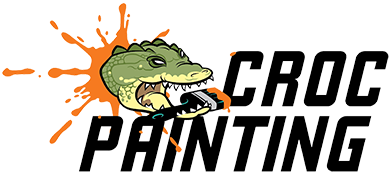Three things determine the durability of the paint used on the interior and exterior surfaces of a home. The first is the quality of the paint; high-quality paints last longer and need less maintenance.
The second is choosing the right finish according to where the surface is and how it will be used. The third is the degree of attention given to preparing the home’s surfaces before the paint is applied. Of these three factors, the most important is the last one, surface preparation.
Homeowners often think the quality of paint they use in their homes is what determines how long the paint lasts. But this is not true, says the Service Star Realty team; paint has to first adhere to a surface before it can last long. And what determines whether the paint adheres or not is how well the surface was prepared.
What is paint preparation and why is it important?
Paint or surface preparation is a series of procedures for ensuring that surfaces that are about to be painted are even and smooth to allow the paint to take on them. It is a painstaking step-by-step process that takes up as much as 50% of the painting job.
It entails removing existing paint layers and all imperfections that exist on a surface. There are several techniques that make up surface preparation. The right technique for a surface depends on whether it is an interior or exterior surface, the type of surface, and if it is a fresh painting or repainting.
What happens if a surface is not properly prepared before it is painted? There will be premature paint failure. Wall paint is not meant to last forever; it has an expected lifetime of between five to ten years. But if the painted surface is not well-prepared, the following can happen:
- The paint will be difficult to apply
- Stains and flaws on the painted surface will still be visible through the paint
- There will be streaks on the wall due to dirt and other impurities on the surface
- The paint will start flaking or lifting from the wall surface
- Newly painted walls will appear faded and wrinkled or have smudges in them
- The paint starts to chalk as it begins to break down
- The paint will peel off because it did not adhere well to the wall
As a rule, paint preparation determines paint performance. The following are the steps involved in preparing a surface for painting.

1. Cleaning
Cleaning removes all the debris and dirt that has accumulated on a wall since the last time it was painted. If the dirt adhering to a wall is not removed before it is painted, the paint adheres to the dirt, rather than the wall surface. A wall that was not cleaned well will have contaminants in the paint, which will cause the paint to chip.
2. Fixing dampness
There may also be issues of dampness that show up as moist discolored patches on the wall. If damp areas are painted over, the paint will not adhere. It will be diluted by the water and will not take. Fixing dampness problems requires solving the problems that cause them. This means that before painting can be done, a plumber has to fix the problem and the wall must be repaired.
3. Scraping
Scraping is another type of cleaning. But unlike the first cleaning, which often uses a power wash; this involves scraping off loose and peeling old paint from the surface. Scraping is a labor-intensive process that requires the house painter to go over every inch of the surface with a scraper. The goal of scraping is to leave a bare surface for painting.
4. Repair imperfections
Over time, there will be various types of damage to the surfaces in a home. There will be nail holes, gouges, scrapes, and other types of flaws. If these are painted over, the paint job would appear ugly and unprofessional. All damage to the home’s surfaces must be repaired before the paint is applied. The common way to repair surfaces is to cover them with filler.
5. Sanding
Filling the imperfections on the wall will leave the surface uneven and jagged in some places. To even out the whole surface, it must be sanded. Sanding not only smoothens the filling, but it also removes the rest of the old paint that is still clinging to the surface. Sanding is another labor-intensive part of the paint preparation process. It can be accomplished with manual sanding, using sandpaper, or an electric sander.
6. Priming
Priming creates a proper surface for the paint to adhere to. It also helps to block out the previous paint and any stains that could not be removed by previous parts of the surface preparation. Priming a surface is especially important if the wall color is going to be changed; particularly from a dark color to a lighter one.




